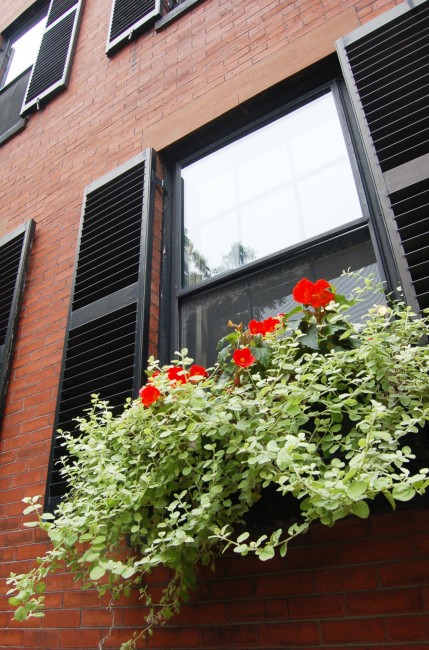How to Have Beautiful Window Boxes | Tips & Advice
Window boxes are an easy and attractive way to a sure way to enhance your curb appeal. These five window box tips will keep your boxes looking their best.

Coffee By Design | Portland, Maine
Photo Credit : Katherine KeenanFrom pretty spring pansies, summery geraniums, and trailing ivy to autumn mums and kale, and even winter greenery and berries, window boxes are a simple way to enjoy gardening throughout the seasons. Spilling over with color, window boxes are not only welcoming, but a sure way to enhance your curb appeal. These 5 window box tips will have your window boxes looking their best all year long.

Photo Credit : Lydia Williams /User Submitted
Window Box 101
Structure and Hardware
The first priority is to make sure that the window box itself is in good condition and has proper drainage. Improper drainage can quickly rot out wooden boxes and potentially damage the wooden siding of your home. Wooden boxes should be inspected yearly and scraped, painted, and repaired as needed before winter sets in. Window boxes with a slanted bottom and a 1/4-inch opening are ideal if you are placing plants directly in the soil in the boxes. You can also place potted plants in the boxes for an easier clean up and less weight in the boxes. Before planting, inspect all hanging hardware and tighten, replace, or repair if needed.
Window Box Style
Traditional or Contemporary?
When choosing your window box and its contents, take into consideration your home’s style, size, and your own gardening preferences. Do you live in a traditional New Englander or Cape? If you do, then traditional window box flower choices are a good pick. Is your home more contemporary? Unusual flower combinations and succulents may be more suited to your home’s architecture. Either way, choose plants and flowers that will complement your home’s color and trim.

Photo Credit : Aimee Tucker
Window Box Conditions
Sun and Water
As with all gardening, knowing how much sun the window boxes will be exposed to is crucial for healthy plants. For sunny locations, choose sun-loving and heat-tolerant plants such as geraniums, marigolds, and succulents. Areas receiving more shade are better suited for plants such as begonias and impatiens. How often should you water window boxes? Unless your window boxes are full of succulent plants, which require minimal water, you should always keep the soil moist, but never muddy. Early morning or early evening watering is recommended.
Window Box Planting Tips
Soil and Spacing
To make a statement, choose flowers with bright, continuing blooms in color choices that complement the surroundings. If you are planting your flowers directly in the soil, make sure clean, enriched, well-draining potting soil is used, and loosen plant roots before planting. When using potted plants, make sure the plants are not root-bound in their pots. If they are, consider repotting in containers about 2 inches larger. Place plants close together without crowding, allowing a few inches between each plant for new growth.
Window Box Fillers
Seasonal Accents
Curly willow and pussy willow sprigs add height and complement early spring perfectly. Trailing ivy and moss make wonderful spring and summer window box fillers. In the fall, hay can be used as an accent, as can miniature pumpkins or gourds. Winter window boxes can be made festive with boughs of various evergreens, seasonal berries, and pinecones.
Are you a fan of decorating with window boxes?
This post was first published in 2016 and has been updated.









A stairway beside a flower shop is festooned with fifteen or so baskets. Red geraniums, white petunias, ivy, and other flowers are clustered together to create a beautiful, wild, art installation. This rather drab, utilitarian area is now somewhere I want to hang out and enjoy.
Interesting article. Lovely photos. Not much content as to what the varieties are, etc. did not find this helpful as a gardener myself.
Agree with READER…expected far more substance to the article (perhaps what different flowers work best in sunny areas, what varieties work in shade, what compliments others best, etc. I just thought article would be far more informative. Love YANKEE magazine though‼️
Hi there! Please note that this post was written for NewEngland.com in 2016 and did not appear in Yankee Magazine. It was intended to give basic advice, mostly about the window boxes themselves, but a post on which flowers work best in window boxes is a wonderful idea! Thank you for your comment, and have a great day.
Enjoy reading the notes of information they are very helpful!